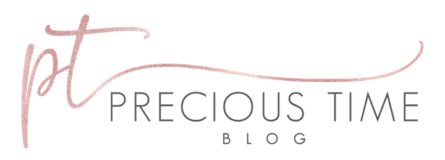
Greenwashing, what is it? You may have heard the term before especially if you’re making the switch to clean beauty. But let’s define greenwashing and ensure this doesn’t happen to you.
Greenwashing is when a company misleads consumers claiming their products are clean, non-toxic, and natural when in fact they’re not. Companies can do this through advertising, branding, and marketing (TV ads or packaging) rather than actually implementing practices that minimize your risk of future health issues.
Some companies will package a product with bold labeling that states things such as “Free of Parabens and Fragrance.” They do this as a deterrent to keep consumers from reading the ingredient labels on the back of the package. They want consumers to look what’s in from of them and grab what they think is clean at first glance. This, my friend, is called Greenwashing.
Let’s take a bottle of hand soap as another example. You might notice on a soap bottle that says, “free from parabens, phenoxyethanol, and petrolatum.” If you flip over the bottles to read the ingredients, you’ll probably notice ingredients listed on there that are not so clean such as maybe “fragrance.” What I am trying to say, is make sure you read your labels. Read everything to make sure you aren’t getting greenwashed. It’s unfortunate that we, as a consumer, are made to believe that what we see is what we get. But the truth is, we need to become our own advocate and educate ourselves on everything we purchase, consume, eat, and use because we can’t trust the FDA to look out for our own well-being.
So how do you know if a product you’re looking at is clean?
The best way to determine whether a product is in fact natural and clean is by downloading a couple apps on your phone. I use them all the time when I’m unsure of something. The two apps I recommend are the following:
- Think Dirty App. You can search MOST products in stores and it’ll rate on a scale of 0-10 (10 being the dirtiest) whether your products are non-toxic or safe to use. It’ll even go further into listing why it’s dirty or why an ingredient isn’t natural. They even take it a step further and list out some cleaner alternatives.
- EWG app (Environmental Working Group). What’s great about this app is whenever I can’t find a certain product on my Think Dirty app, I go to this app to search any ingredients that are questionable or that I haven’t heard of before. So if something sounds funky, search the ingredient and find out what it is.
What are some common signs of greenwashing when looking at a product?
Some packaging on the products go through extra lengths by adding words such as:
- Natural
- Paraben free
- Chemical free
- Dermatologist tested
- Natural fragrance
- Sensitive
- Organic
- Plant based
- Green
- Gentle
- Sulfate free
- Eco-friendly bottle
- Plant labels
- Organic ingredients
- And much more…
Just to put things into perspective, the US only bans 11 ingredients versus Europe that bans over 1,300. It’s time to be our own advocate and not trust what’s always on a label. Research, Research, Research. There is nothing more important than you and your family’s health. Your skin is your largest organ. Make sure you’re not applying potentially harmful ingredients that can later damage your health.
Here are a few brands off the top of my head that greenwash:
- Love and Planet Shampoo and Conditioner
- Meyers
- Babyganics
- Lush Cosmetics (I know…SHOCKING)
- Aveeno
- Bare Minerals
- Tarte
- Raw Sugar Living
- Arbonne
- Burt’s Bees
- Clairol Hair Food (I was greenwashed by this product)
And much more… I encourage you to ALWAYS read your labels. Don’t be fooled by labels such as organic, non-cruelty, stickers with plants and flowers, etc…
Just to take this article 1 step further…I want to share 1 particular product that I myself, was greenwashed by. I want to list out the bad ingredients, what to look for on the label, and how to check if this product is dirty and why.
We all know and have heard of Meyers soup (Meyers in general). Let’s take a look at this bottle. When you see it, what do you see?
On the front of the bottle:
- Aromatheapeutic (this doesn’t mean anything but artificial fragrance)
- Biodegradable
On the back of the bottle:
- Leaping bunny logo
- Recycle logo
- Made without the following ingredients: such as plant derived ingredients, natural essential oil
- Made without the following ingredients: artificial colors, parabens, phthalates, glycol solvents, and chlorine, etc…
All of these products listed on the labels are just a deterrent to get you to buy the product. If you were to scroll down to the bottom at the actual ingredients label you will see ingredients such as fragrance, PEG-5 Cocoate, and Sodium Lauryl Sulfate = all bad toxic ingredients.
Unfortunately, Meyers is rated an 8 on the Think Dirty App which is bad. On the Think Dirty app, you can click on each ingredient listed and read why it’s bad. The next tab over is “Our Picks” which is useful if you’re looking for a cleaner alternative. Below are both apps for your reference.
Hope this article helps you to not get greenwashed when shopping for products you think are safe, natural, and clean for you and your family.
XOXO,
Natalie











